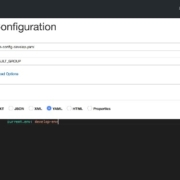I had the opportunity to meet with Marco Palladino, CTO and Co-founder, Kong on a recent trip to San Francisco to discuss their decision to open source their universal service mesh, Kuma.
Articles
This week, we look at API vulnerabilities in Kubernetes and 3Fun, upcoming API Specification Conference, and slides from EIN 2019 conference presentation.
Vulnerabilities: Kubernetes
Kubernetes has fixed the API vulnerability CVE-2019-11247.
Config servers are widely used in microservices architectures as placeholders for configurations. They also provide a centralized repository for users to manage configs for multiple applications.
Today, we are going to look at an example of how to use Nacos as a config server with Spring Cloud for Alibaba. The example is a Spring Boot application, running a Nacos server locally.
Welcome to our latest episode of Tom’s Tech Notes! In this episode, Tom asks what our collection of industry experts’ favorite use cases and benefits of microservices are.
As a primer and reminder from our initial post, these podcasts are compiled from conversations our analyst Tom Smith has had with industry experts from around the world as part of his work on our research guides.
This is the first in a three part series on looking at creating "local" microservices.
What I mean by local microservices is pass by reference microservices running in the same process. Right now, I see microservices similar to the original EJB 1.0 specification. All calls between the EJBs were remote, just like microservices are now. Due to remote call overheads, the EJB 2.0 specification brought in session (local, pass by reference) EJBs running in the same process.
A while back we wrote an article "Best Practices for Tracing and Debugging Microservices" that has turned out to be our most viewed web page ever on the 345 site. The original article is a brief look at some of the main considerations, so when we were looking for a subject for our first podcast episode this was an ideal candidate.
Some of the main points from the episode:
As we said in our introductory post, we’re going to do several posts about Zoomdata microservices. This one covers a brief overview of microservices and the Zoomdata web application.
Zoomdata Microservices, In General
The Zoomdata platform is architected as a set of loosely-coupled Java microservices. Unlike traditional BI, which is deployed as a monolithic application (or possibly entwined in an old-school enterprise service bus), a microservices architecture allows for:
This article is dedicated to the non-commercial Java conference that I visited on September 24, 2019, in Hannover, Germany, known as Java Forum Nord. The spoken language is German but the presentations consist of diagrams and code examples so they can be understood by the non-German-speaking readers. I want to list here the lecture which I have visited with links to the presentations and also lists with headwords.
Networking Instead of Waste: Let’s Talk — Stefanie Reinicke, Dr. Jan-Christian Dammann
This presentation was about making development teams stronger through three topics:
As microservices become more popular, the stability between services becomes more and more important. Technologies such as flow control, fault tolerance, and system load protection are widely used in microservice systems to improve the robustness of the system and guarantee the stability of the business and to minimize system outages caused by excessive access traffic and heavy system load.
Hystrix, an open source latency and fault tolerance library of Netflix, has recently announced on its GitHub homepage that new features are no longer under development. It is recommended that developers use other open source projects that are still active. So what are the alternatives?
Recently, I came across Micronaut, a super light framework that fills the need for something in between Spring Boot and Vert.x.
I have been playing with it and wanted to see if I could get a simple project with Micronaut, a Kotlin/Java intermix for the (main) source code, and Groovy/Spock tests. Turns out it’s not that difficult. I just had to fiddle with it a little bit to get it right. So to save you time, here it is:










